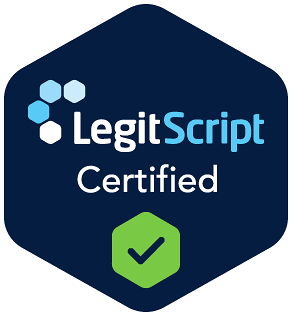
When you are ready to take the first step toward recovery, finding the right detox center in Encino can feel overwhelming. Medical detox is more than just stopping substance use. It is a carefully supervised process that protects your health while your body clears drugs or alcohol from your system. At Restore Health & Wellness Center, medical detox serves as the foundation for lasting recovery, offering 24/7 medical support in a licensed Los Angeles facility that serves Encino and the San Fernando Valley.
This guide explains what medical detox involves, why it matters, and how a coordinated treatment approach helps you move from detox into therapy without losing momentum.
What Is Medical Detox and Why Does It Matter?
Medical detox is the clinically supervised process of withdrawing from substances while receiving constant medical care. Unlike attempting to quit on your own, supervised detox provides round-the-clock monitoring, medication support when appropriate, and immediate intervention if complications arise.
During intake at a detox center, clinicians review your substance use history, current medications, and any underlying health conditions. Nurses check vital signs at regular intervals, physicians oversee your care, and adjustments are made in real time to keep you safe and as comfortable as possible.
According to the Substance Abuse and Mental Health Services Administration (SAMHSA), medically supervised detox significantly reduces the risk of dangerous withdrawal complications, particularly for alcohol, benzodiazepines, and opioids. The goal is not just to get through withdrawal but to prepare you mentally and physically for the therapeutic work that leads to lasting recovery.
How Does the First 72 Hours of Detox Work?
The first three days of detox are critical. Your body is adjusting to the absence of substances, and withdrawal symptoms typically peak during this window. At Restore, the initial 72 hours follow a structured approach designed to reduce anxiety and help you settle into treatment.
Medical monitoring happens at set intervals. Nurses track your vital signs and symptoms, reporting changes to the physician team. Brief counselor meetings provide emotional support and help you identify early triggers. Wellness basics like proper hydration, balanced nutrition, sleep support, and gentle movement are integrated into your daily routine. These elements stabilize your mood, improve focus, and help your body heal.
The predictable daily structure makes participation easier. When you know what to expect each day, you can focus on getting well instead of worrying about what happens next.
Why Do Encino Residents Choose Restore for Detox?
Location matters when you are seeking treatment. Restore’s Los Angeles facility is easily accessible for families in Encino, Sherman Oaks, Calabasas, and surrounding San Fernando Valley communities. Proximity allows loved ones to stay involved during your early recovery, which research shows improves outcomes.
What sets Restore apart is the seamless continuum of care. Detox connects directly to residential treatment, Partial Hospitalization Programs (PHP), and Intensive Outpatient Programs (IOP) within the same system. You do not have to restart your story with a new treatment team or wait for openings at another facility.
Admissions are available 24/7, and insurance verification happens quickly. The admissions team provides clear guidance about what to bring, how arrival works, and what your first day will look like.
What Happens After Detox Ends?
Detox is the doorway, not the destination. Most clients at Restore transition directly into residential treatment, which provides 24-hour structure and daily therapy in a supportive environment. For those who have stable home environments or work commitments, the Partial Hospitalization Program offers full-day treatment without overnight stays.
When you need even more flexibility, the Intensive Outpatient Program provides structured therapy for 10 to 12 hours per week. IOP allows you to maintain work or family responsibilities while still receiving consistent clinical support. Your next level of care is scheduled before you leave detox, so there are no gaps in treatment.
Does Restore Treat Mental Health Conditions Alongside Addiction?
Yes. Substance use disorders frequently overlap with anxiety, depression, trauma, and other mental health conditions. The National Institute on Drug Abuse confirms that approximately half of individuals with substance use disorders also experience mental illness.
Restore integrates dual diagnosis treatment, addressing both substance use and mental health within the same program. This approach includes psychotherapy, medication management when clinically indicated, and holistic supports like mindfulness, movement therapy, and nutrition coaching. Treating the full picture improves engagement, stabilizes mood, and reduces relapse risk.
What Substances Require Medical Detox?
Medical detox is essential for substances that produce dangerous withdrawal symptoms. Alcohol, benzodiazepines, and opioids are the most common substances treated in supervised detox settings.
Alcohol withdrawal can cause seizures, hallucinations, and delirium tremens, a life-threatening condition. Benzodiazepine withdrawal follows a similar pattern and requires careful tapering to prevent seizures and severe anxiety. Opioid withdrawal, while rarely life-threatening, causes intense physical discomfort that often leads to relapse without medical support.
Your detox protocol reflects the withdrawal pattern of your specific substance, your usage history, and any underlying health conditions. Matching treatment to substance type is why supervised detox is safer than attempting to quit on your own.
Who Benefits Most from Medical Detox?
Medical detox is the right choice if you have experienced moderate to severe withdrawal symptoms when trying to stop on your own. It is also essential if you live alone or lack safe monitoring during the first days of withdrawal.
You should consider supervised detox if you want a direct transition into therapy without pauses or gaps. If proximity matters to you, choosing a San Fernando Valley program allows family to visit easily and stay connected throughout your treatment.
Frequently Asked Questions About Detox Center Encino
How long does medical detox take?
Detox length varies by substance, usage history, and individual health factors. Most clients complete detox in five to seven days, though some may need more or less time.
Will I be comfortable during detox?
Comfort is a priority. Medical teams use medications when appropriate to ease withdrawal symptoms. While some discomfort is normal, supervised detox is far more manageable than withdrawing alone.
Does insurance cover detox?
Most insurance plans cover medical detox. Restore offers free, confidential insurance verification before admission so you know your costs upfront.
What if I relapse after detox?
Relapse does not mean failure. It is a common part of the recovery process. If you relapse after completing detox, you can return to treatment. The important thing is to reach out quickly and get back into treatment.
Taking the First Step Toward Recovery
Choosing a detox center in Encino means choosing safety, medical support, and a clear path forward. At the Restore Health & Wellness Center, detox is just the beginning. The continuum of care from medical detox through residential treatment, PHP, and IOP ensures you have the structure and support needed to build a life in recovery.
If you are ready to start, Restore’s admissions team is available 24/7 call us at (888) 979-4570 for a confidential consultation and free insurance verification. You do not have to face this alone. Contact Restore today to take the first step toward healing.
References
- Substance Abuse and Mental Health Services Administration (SAMHSA). “Medications for Substance Use Disorders.” SAMHSA Publications, https://www.samhsa.gov/medications-substance-use-disorders
- National Institute on Drug Abuse (NIDA). “Common Comorbidities with Substance Use Disorders Research Report.” NIDA Research Reports, https://nida.nih.gov/publications/research-reports/common-comorbidities-substance-use-disorders/introduction




